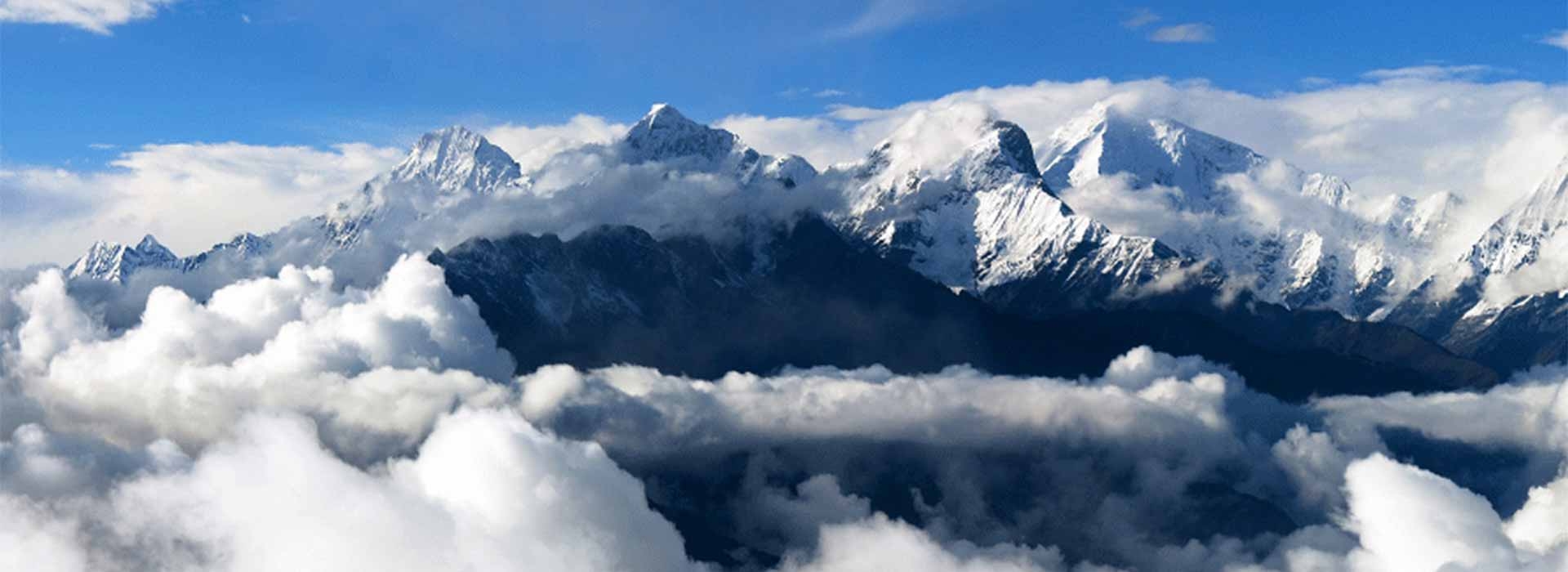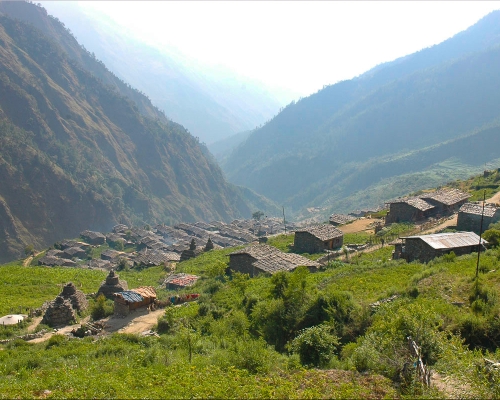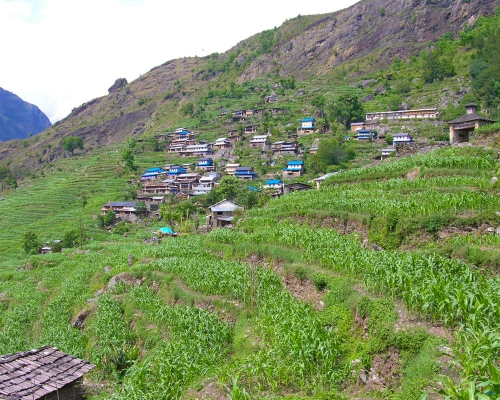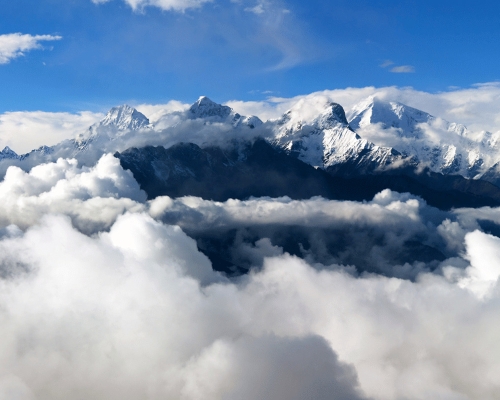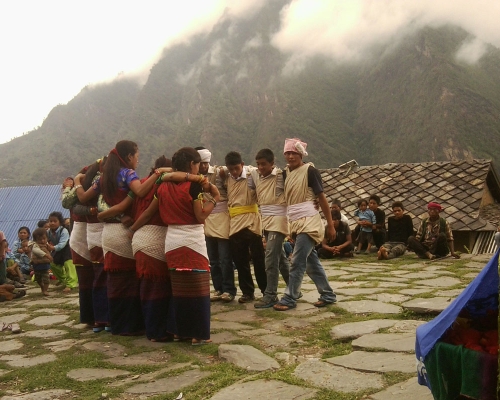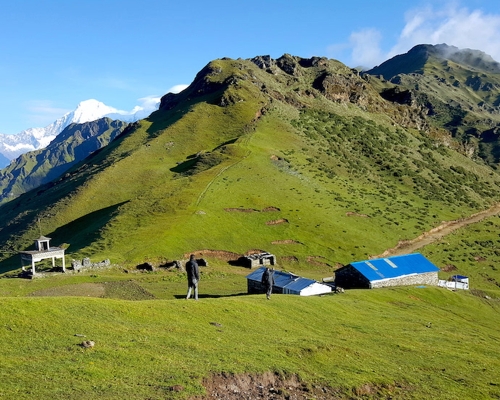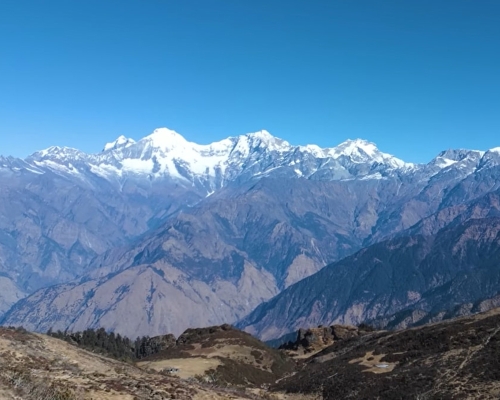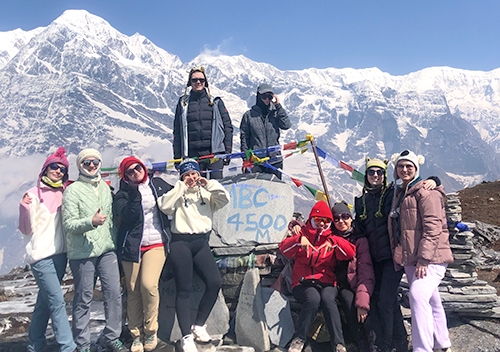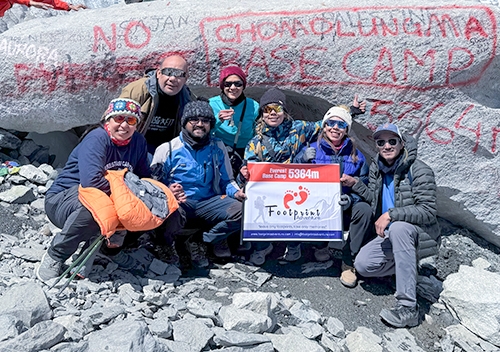Ruby Valley Trek Trip Overview
Ruby Valley Trek, located in the Dhading district of Nepal, is a remote trekking destination known for its cultural heritage and natural beauty. Unlike the crowded trails of popular regions like Everest Base Camp Trek and Annapurna Base Camp Trek, the Ruby Valley trek Nepal remains relatively untouched by mass tourism. Situated between the Ganesh Himal and Langtang mountain ranges, this area offers a serene and less-traveled alternative for trekkers.
The valley's name comes from the Ganesh Himal region, historically known for its rubies, minerals, and crystal deposits. Although commercial mining has ceased, the area's mineralogical significance remains a key part of its identity. The Ruby Valley Trek altitude varies significantly, reaching its highest point at 3,850 meters at Pangsang Pass, while the lowest is 550 meters at Dhading Besi.
Ruby Valley Trekking is home to the Gurung, Ghale, Tamang, Brahmin, and Chhetri communities. With few hotels available, most visitors stay in local homestays in Ruby Valley, immersing themselves in the valley's rich traditions. The Tamang people, who follow Tibetan Buddhism, are especially known for their vibrant music, dance, and rituals. Tamang Selo, a lively folk dance, is a highlight of their culture. The valley is filled with monasteries, chortens, and prayer flags, creating a serene atmosphere. Visitors are warmly welcomed and treated to traditional dishes like dhindo, Gundruk, and Nepali pancake (Gilo roti), offering a true taste of local life.
As you trek through the valley, you’ll pass through lush forests, terraced fields, and alpine meadows, each offering a diverse range of vegetation. In spring, the rhododendron forests bloom in vibrant colors, adding beauty to the landscape. The valley is also home to various wildlife, including langur monkeys, deer, black bears, leopards, and numerous bird species, making it a haven for nature enthusiasts.
The trek leads you through the Ganesh Himal range, featuring majestic peaks like Ganesh I, II, III, and IV. Along the way, you'll witness breathtaking views of 23 snow-capped mountains, including the Manaslu, Ganesh Himal, Annapurna, and Langtang ranges, as well as the Tibetan Himalayas and Dorje Lakpa Himal.
Compared to more popular trekking routes in Nepal, the Ruby Valley Trek, part of the Ganesh Himal region trek, remains relatively undiscovered and attracts fewer tourists. This aspect creates a more authentic and peaceful trekking experience. As a notable homestay trek in Nepal, the route passes through traditional Tamang and Gurung villages, providing deep insights into local culture and lifestyles that are less affected by tourism. Despite its remote feel, the trek is conveniently close to Kathmandu, making it logistically easier than some other routes. It offers enough challenge to satisfy experienced trekkers while remaining accessible for those with less trekking experience.
For those interested in detailed planning, the Ruby Valley Trek itinerary from Dhading Besi is a popular option, providing a unique route that starts from Dhading Besi and covers key villages and scenic spots in the valley. This itinerary offers trekkers a complete experience of the Ruby Valley region with cultural immersion and natural beauty.
Highlights of Ruby Valley Trek
- Close to Kathmandu Valley, the Ruby Valley trek is newly opened and still relatively undiscovered, offering a peaceful trekking experience
- Breathtaking views of the Ganesh Himal I, II, III, and IV, as well as the Langtang and Manaslu ranges, especially from Pangsang Pass, where sunrise and sunset views are spectacular
- The trek features numerous springs and waterfalls, enhancing the natural beauty along the Ruby Valley trekking route
- The valley is known for the ruby mines in the Ganesh Himal mountains
- Experience traditional Nepali life and customs by staying with local families in homestays in Ruby Valley
- The trek takes you through a variety of terrains, including farmland, green meadows, rocky hills, and dense forests
- Explore dense rhododendron, pine, oak, and bamboo forests, offering insight into the region's rich plant life
- Discover ancient Buddhist monasteries along the trail, giving a glimpse into the region's spiritual traditions
Major Highlights of Ruby Valley Trek
Pangsanga La Pass
Pangsang Pass, the highest point of the Ruby Valley Trek Nepal, lies at an elevation of 3,850 meters above sea level. At the top, it rewards you with magnificent mountain views after the strenuous climb from the pass, you will see the Ganesh Himal I, II, III, and IV, and the Langtang and Manaslu ranges. You can also see the whole valley you are hiking through from up here, in all of its glory. The view of sunrise and sunset from this point is especially spectacular. As the pass can be cold and windy, trekkers on Ruby Valley trek are advised to put on a lot of warm clothes. Pangsang Pass holds some cultural importance in Buddhist practices and is therefore decorated with prayer flags and stone cairns.
Traditional Tamang Villages
Ruby Valley Nepal, is home to traditional Tamang villages that allow an individual to explore more about the rich culture and lifestyle of the Tamangs. They are distinguished by their stone and wooden houses, which are uniquely designed, mostly with carvings. The Tamangs villages in Ruby valley trekking have a strong attachment to their traditions, from their language to attire to festivals. One can also witness the whole way of life, including farming, weaving, and religious customs, on a day-to-day basis. The Tamang villages are also a major highlight of the Ruby Valley Trek because of their hospitality and immersion into their culture.
Is This Trek the Right Fit for You?
Ruby Valley Trek is graded as a moderate trek. There are well-marked trails that fit trekkers of reasonable fitness. Although some parts have steep ascents and descents, the overall topography could be more technical. A basic trekking experience will help you complete the trek easily, which also means the trek is very friendly for beginners and frequent hikers. Proper acclimatization and preparation are fundamental to ensuring your comfort.
How to Prepare Yourself for the Ruby Valley Trek?
If you'd like to fully enjoy the Ruby Valley Trek experience, you should be in shape to hike anywhere from 5-7 hours each day on a range of trail conditions, including up and downhills. While you would not require any technical skills, but physical fitness and overall stamina will enhance your trek experiences. If you can walk, jog, or climb stairs in the weeks prior to your trek, you can build the stamina you'll need. We encourage hiring a guide for this and any trek, as they will lend support and knowledge of the area, especially if you're not familiar with it. Building your cardio fitness and endurance fitness will ready your body for the periodically shifting altitudes and trail conditions that you will encounter during the Ruby Valley trekking route.
When is the Best Season to Trek to Ruby Valley in Nepal?
The Ruby Valley Trek can be done in all seasons and is therefore a popular year-round trekking destination in Nepal. The best time to do the Ruby Valley Trek is during spring (March to May) and autumn (September to November) when the weather remains warm and the skies are clear, offering ideal trekking conditions. During the monsoon period, from June to August, the trail may get slippery due to rain, and trekkers could encounter leeches. While the Ruby Valley trek during monsoon is less popular, the surroundings present beautiful green landscapes with blooming flora, providing a unique and rewarding monsoon trekking experience in Nepal.
Why Choose Footprint Adventure for The Ruby Valley Trek?
Footprint Adventure is a trusted local trekking company based in Nepal. We create genuine and memorable trekking experiences, and the Ruby Valley Trek is one of our favorites. From the moment you arrive in Nepal, we take care of you with airport pick-up, comfortable places to stay, help with renting gear, and friendly, expert guidance to make sure your journey goes smoothly.
Our team knows the Ganesh Himal and Langtang regions inside and out. We focus on your safety and comfort while helping you connect with the local culture. Our guides and trip planners are from the area and design each trek to give you a real sense of the landscape, traditions, and warm hospitality of the Tamang and Gurung people.
We also care deeply about protecting the environment. We follow the Leave No Trace principles and support local communities along the way. One of our proud initiatives is Carry Me Bag, which encourages travelers to use reusable bags and reduce plastic waste on the trail.We do our best to make sure your trek feels truly worth it. From the planning to the trail itself, we focus on giving you a smooth, meaningful, and memorable experience!

